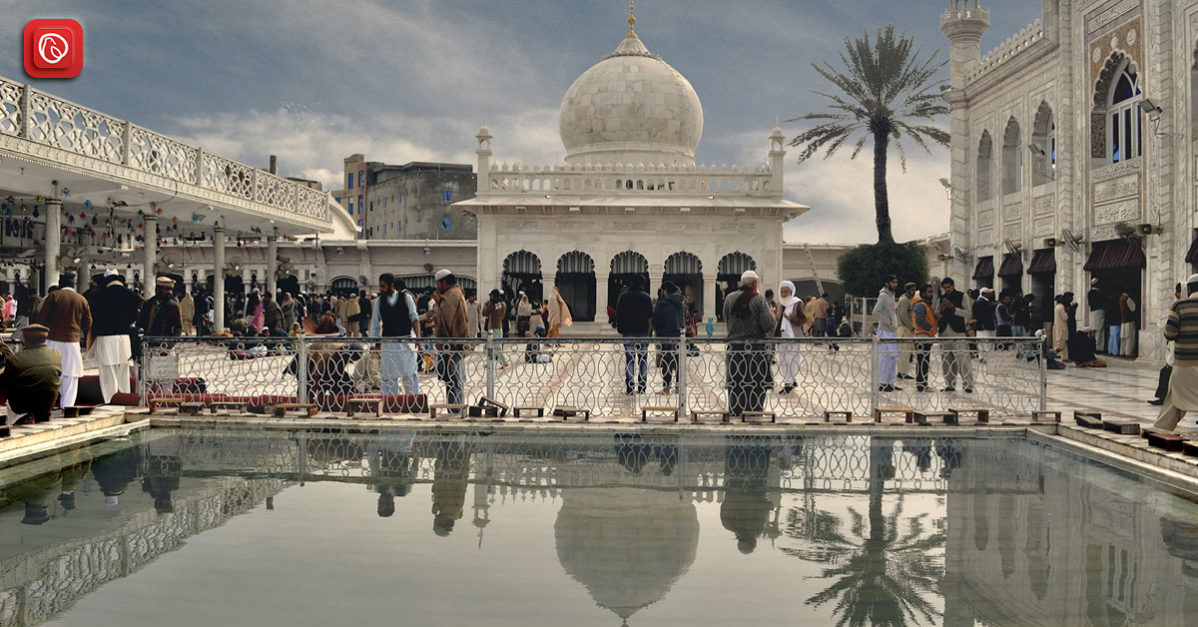A well-known Sufi shrine, Golra Sharif Darbar is situated in Pakistan’s Islamabad Capital Territory. Dedicated in the 1900s, the shrine is the resting place of the renowned Sufi scholar Peer Meher Ali Shah of the Chisti order.
In addition to his spiritual teachings, Peer Meher Ali Shah gained notoriety for spearheading the anti-Ahmadiya movement. After his death, the shrine developed into a hub for travellers looking for blessings and spiritual direction. The heirs of two notable individuals, Peer Syed Shah Abdul Haq Gilani and Syed Ghulam Moinuddin Gilani, share custodianship of the shrine currently.
Notably, until his death in July 2020, Peer Syed Shah Abdul Haq Gilani served as Sajjada Nashin, the shrine’s caretaker, for an extraordinary 46 years. In this blog, Graana.com will get you more information on Golra Sharif Darbar. For additional information, keep scrolling.
Highlights
| Field | Description |
| Name | Golra Sharif (Urdu: گولڑہ شریف) |
| Description | Town situated near the Margalla Hills in Islamabad Capital Territory, Pakistan |
| Location | Golra Sharif, Islamabad Capital Territory |
| Affiliation | Islam |
| Coordinates | 33°41′28.95″N 72°58′27.65″E |
| Elevation | 520 m (1,710 ft) above sea level |
| Distance from Taxila | 17 km (11 mi) |
| Known for | Mausoleum of Meher Ali Shah |
| Territory | Islamabad Capital Territory |
| Sector | E-11 |
| Geographic coordinates | 33°41′28.95″N 72°58′27.65″E |
| Architecture | Architect(s): Babu Lal-Muhammad Chughtai, Style: Islamic architecture |
Location

Golra Sharif Darbar provides a beautiful position hidden amidst the natural splendor of Islamabad, Pakistan. Here’s a breakdown of the important aspects that contribute to its setting:
- Foothills of the Margalla Hills: Located at the foot of the magnificent Margalla Hills is the settlement of Golra Sharif, home to the Darbar. These gently sloping foothills, which are a part of the Himalayas, provide a peaceful and picturesque setting.
- Heart of Sector E-11: Golra Sharif is administratively a part of the Islamabad Capital Territory’s Sector E-11. The peaceful ambiance is maintained yet guests may easily access the area thanks to its central location.
- Close to Rawalpindi: The town is located around 11 miles away from the thriving metropolis of Rawalpindi, making it an easy commute for those who live there.
- Golra Sharif Darbar has pleasant views and an elevation of 520 metres (1,710 feet) above sea level. This means that the village will be colder than its surroundings and, depending on where you are in the village, you may be treated to amazing sweeping views.
- Distance from Taxila: For those interested in historical investigation, the Darbar’s location is 17 kilometres (11 miles) from the ancient city of Taxila, a UNESCO World Heritage Site.
Historical Context
Before the advent of Peer Meher Ali Shah’s ancestors, Golra Sharif was a modest village on the outskirts of Rawalpindi. The building of the shrine transformed the community into a center of pilgrimage and spiritual significance.
Coordinates for Navigation
For those seeking a precise location, the Darbar can be found at 33°41′28.95″N 72°58′27.65″E.
Significance of Golra Sharif Darbar
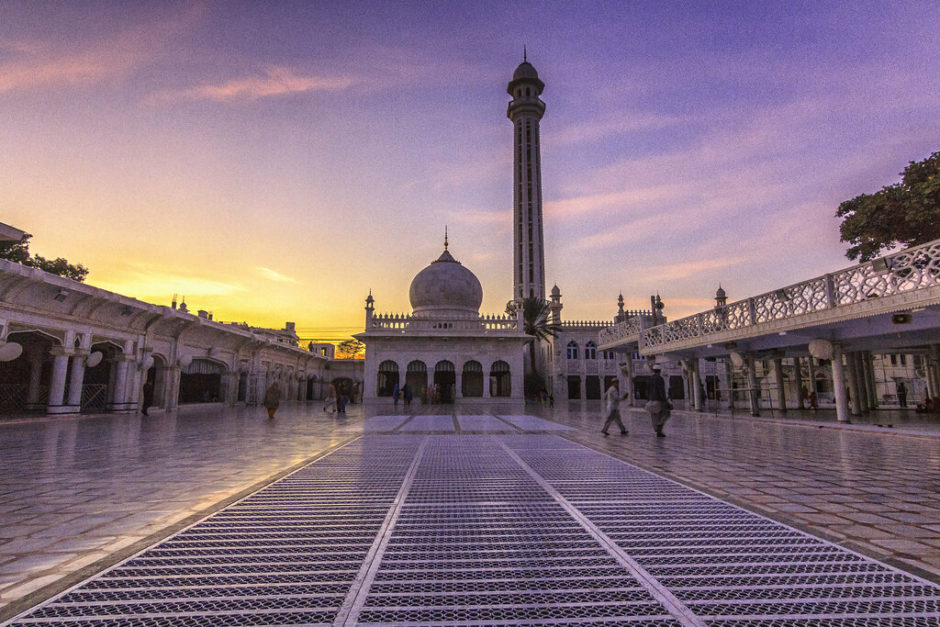
Golra Sharif Darbar, which lies in Pakistan’s Islamabad Capital Territory next to the Margalla Hills, is very significant to many people despite its remote position. Golra Sharif was completely changed in the 20th century with the arrival of Meher Ali Shah and the construction of his mausoleum, even though the town itself existed before the shrine.
The mausoleum’s core value derives in its link with Peer Meher Ali Shah, a prominent Sufi scholar of the Chisti order. Sufism, a mystical sect of Islam, promotes spiritual growth and love for God. Peer Meher Ali Shah’s teachings and leadership attracted a following, making the Golra Sharif Darbar a center for spiritual guidance and pilgrimage.
There is more to the shrine than just its religious significance. It draws tourists from a variety of backgrounds and has developed into a site of cultural heritage. A calm and motivating ambiance is created by the exquisite calligraphy, creative ornaments, and white marble building.
Individuals from many backgrounds gather here to immerse themselves in the atmosphere and discover the extensive legacy of Sufism contained in the Darbar.
The Darbar also bears witness to the ongoing legacy of the Sajjada Nashin, who were in charge of it. The devotion to upholding the shrine’s spiritual value and inviting devotees is exemplified by Peer Syed Shah Abdul Haq Gilani’s more than 40 years of committed service.
Construction of Darbar
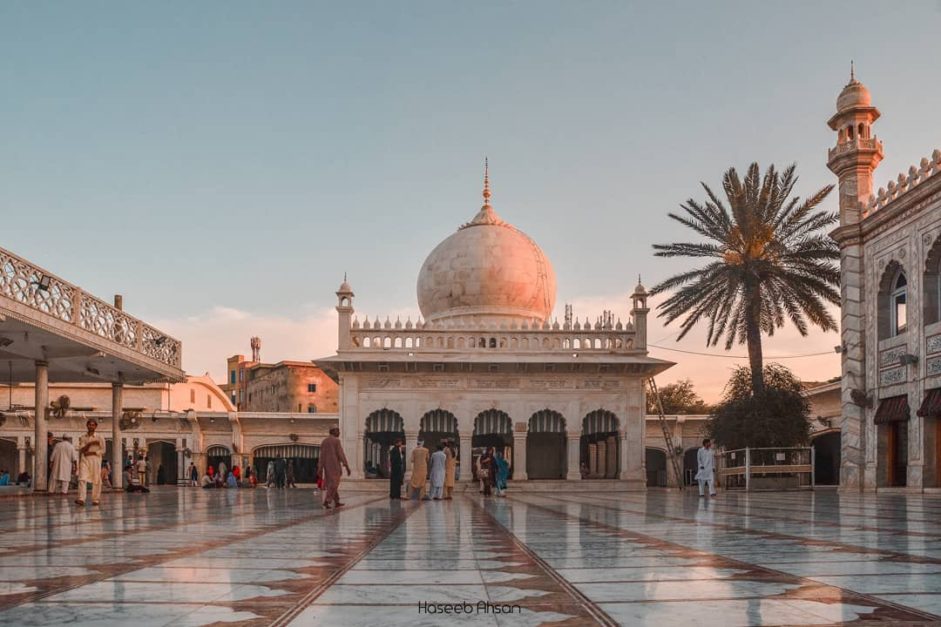
The creation of the majestic tomb, the focal point of Golra Sharif Darbar, is an intriguing tale. After Peer Meher Ali Shah died in 1937, his successor Babuji took on a challenging project.
The construction spanned over nearly two decades, a monument to the dedication and thorough planning involved. The Makrana mines in Jodhpur State, which are prized for their fine white marble, were a well-known source that the builders consulted in order to reach the appropriate opulence.
Using this marble not only guaranteed longevity but also gave the mausoleum a serene, elegant feel. The white marble, which was probably hand-carved with elaborate patterns, would have shown out sharply against the Margalla Hills’ background and emphasised the building’s spiritual significance even more.
The product of almost twenty years of labour, the monument served as more than just a mausoleum. As a sign of spiritual veneration, Golra Sharif Darbar drew pilgrims and devotees looking for comfort and a way to connect with Peer Meher Ali Shah’s legacy.
A Historical Glimpse into Golra Sharif Darbar
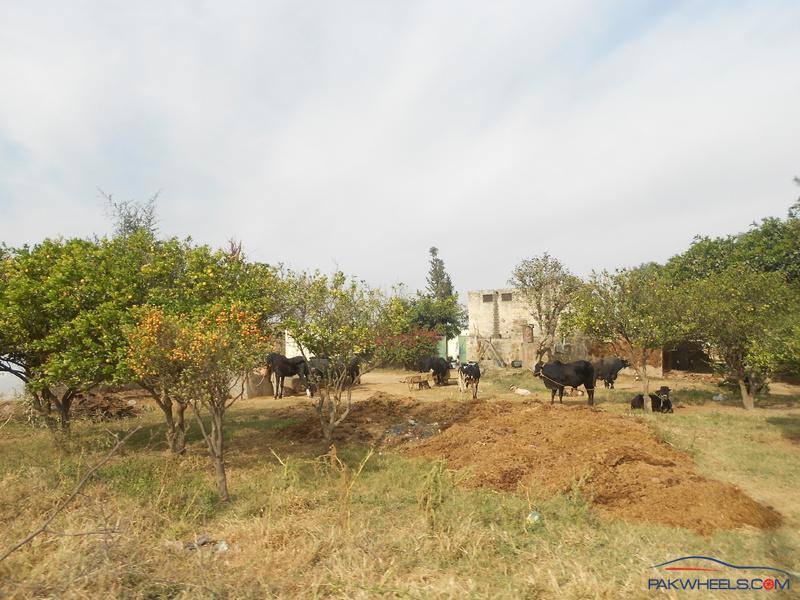
The Golra Sharif Darbar’s history reveals an intriguing journey through shifting monarchs and cultural influences, even if it is best known today for its spiritual significance. Below is a summary of the main ideas:
- Pre-Islamic Era: The territory surrounding Golra Sharif possesses a rich cultural heritage dating back 2,000 years. Archaeological evidence reveals a flourishing Buddhist civilization in the area, with remains still visible today.
- Afghan Rule: The Afghans, particularly Golra Sharif, ruled the area towards the end of the 18th century.
- The Sikhs rose to prominence after Punjab’s governor, Maharaja Ranjit Singh, proclaimed independence in the late eighteenth century, as Afghan influence grew less.
- British Annexation: Political upheaval and instability characterised this time.
- Arrival of Spiritual Guidance: According to the Quran, this time of moral and social collapse was accompanied by the rise of Muslim saints.
- A Region Rich in History: Golra Sharif’s geographical location alone reveals a great deal about its historical importance.
Golra Sharif Railway Station
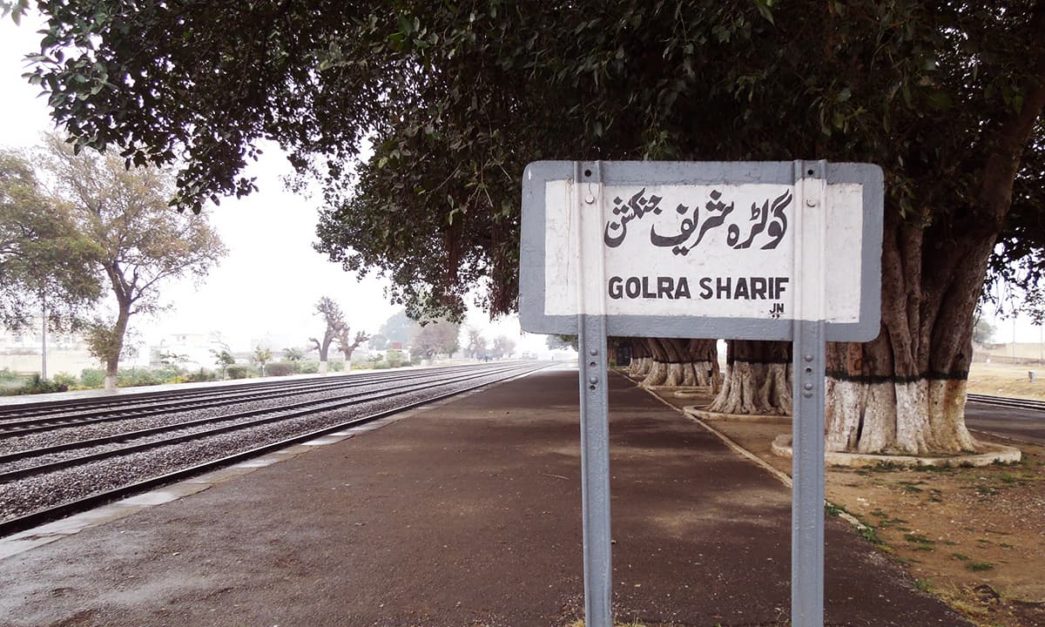
The Golra Sharif Railway Station, located on the outskirts of Islamabad, is more than just a station; it’s a piece of history. Even now, the stunning yellow stone Victorian building, is breathtaking.
The station serves as a key junction on the Rawalpindi Division line, linking Peshawar and Karachi. However, the Golra Sharif Railway Museum, is what really makes Golra Sharif unique. With its collection of railroad artifacts, this museum provides a window into Pakistan’s railway history.
FAQs
Following are some of the FAQs
What is Golra Sharif Darbar?
Golra Sharif Darbar is a prominent Sufi shrine located in Islamabad, Pakistan. It serves as the mausoleum of Peer Meher Ali Shah, a revered 20th-century Sufi scholar. The Darbar attracts thousands of devotees seeking spiritual guidance and blessings.
Where is Golra Sharif Darbar located?
The Darbar lies in the village of Golra Sharif, in the foothills of the Margalla Hills within Sector E-11 of the Islamabad Capital Territory. Its coordinates are 33°41′28.95″N 72°58′27.65″E.
What is the significance of Golra Sharif Darbar?
The significance of the Darbar is multifaceted:
- Spiritual Center: It serves as a center for Sufi teachings and pilgrimage.
- Cultural Heritage: The beautiful architecture and rich history make it a symbol of cultural heritage, drawing visitors from diverse backgrounds.
- Legacy of Custodians: The dedication of the Sajjada Nashin, the custodians of the shrine, ensures its continued significance.
When was Golra Sharif Darbar built?
Construction of the mausoleum began following the passing of Peer Meher Ali Shah in 1937. The project took nearly two decades to complete, with marble sourced from the renowned Makrana mines in Jodhpur, India.
How can I reach Golra Sharif Darbar?
The Darbar lies near the Golra Sharif Junction Railway Station, offering a potential transportation option.
For more details, visit Graana.com.
